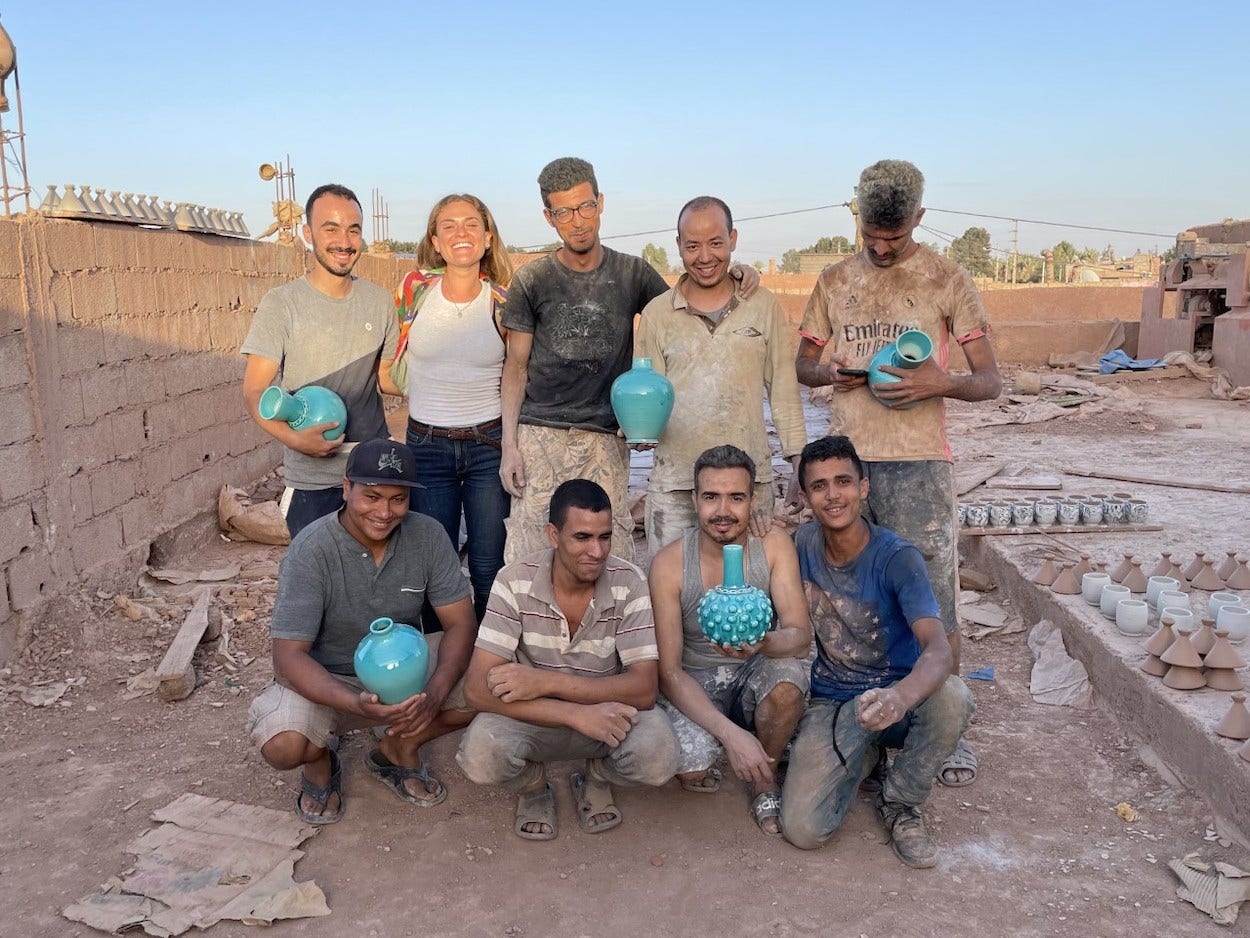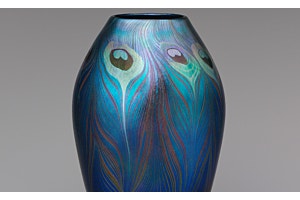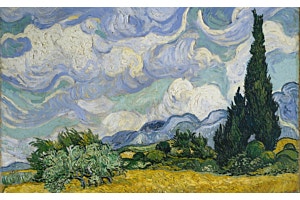
Concurrent with the 10th anniversary of the Museum's reimagined Islamic Wing—15 extraordinary galleries cohesively exhibited as Art of the Arab Lands, Turkey, Iran, Central Asia, and Later South Asia—The Met Store is delighted to present the Heirloom Project. This celebratory initiative commemorates The Met’s exceptional Islamic art collection and assists in the preservation of traditional craftsmanship by engaging with global artisans such as Beatriz de Melo Belfrage.
Informed by an academic background in anthropology and politics, Beatriz considers the culture, history, and socioeconomic realities informing artisan traditions around the world. A magnetic attraction to the ancient art form of ceramics yielded formal training with pottery masters in Japan and Korea. Beatriz’s practice has since pivoted to embrace collaboration with highly skilled craftspeople in both Afghanistan and Morocco.
Here, Beatriz discusses her partnership with Moroccan Berber potters to realize four brilliant terracotta vases, each inspired by a spectacular vessel in the Museum’s Islamic art holdings: a 12th-century stonepaste jar attributed to the Syrian city of Raqqa; an 11th–12th-century earthenware jar found in Syria; a 9th–10th-century blown-glass bottle attributed to Iraq or Syria; and a molded stonepaste ewer, or vase-shaped pitcher, attributed to 12th–13th-century Iran.




Tell us about your interest in ceramics!
My fascination with the craft has always gravitated around the remarkable quality I feel pottery holds: its capacity to transform spaces—somehow tipping the energy balance of a space—to turn it into the feeling of a home. It’s an intangible and yet very real power that these pieces have.
And yet, as much as pottery can be beautiful, it’s in its functional capacity that it has served most prominently in the development of human civilization. Much like the four vases in The Met collection that this range is based on, ceramic vessels have stood the test of time—of volcanoes and wars, pillage and decay—still to be unearthed hundreds (or thousands) of years later. I am in awe of the rather precious thought that pieces we now see housed in museums were part of the lived experience of households long ago.
What’s your philosophy as a design collaborator on the Heirloom Project?
My ethos for projects with artisans I have worked with in Afghanistan and Morocco to date is that any engagement should be equitable, sustainable, and innovative—innovation, in particular, being a means by which designs can avoid becoming repetitive or stagnant, and thereby continue to solicit interest from buyers, in turn generating the revenue needed for artisans to keep trading and, by extension, the craft to continue.
However, whilst “trade” remains an inescapable reality for the future of craft, for many of the artisans I have worked with, the decision to continue their craft is a complex one taken in the face of, at times, overwhelming economic hardship and personal sacrifice.
Artisan communities who I have had the immense privilege of working alongside have had to navigate ways of continuing to produce their craft alongside wars, natural disasters, and environmental degradation sometimes so extreme that it directly affects their ability to source the requisite raw materials, [leads to] protracted economic hardship, and more. Where there is little to no obvious business case to continue, the decision to do so often transcends a matter of profits, with the resolve to continue with the next generation of makers—and with the very future of their land and heritage—in mind.
So, as far as my philosophy in this matter goes, it is that as consumers of craft, we owe it to the world’s artisans to travel and buy in as considerate, educated, and respectful a way as possible. Because these makers really have poured nothing short of their heart and soul into the creation of these objects.




Can you talk a bit about your contribution to the Heirloom Project?
The Heirloom project is a beautifully ambitious project elevating artisans who may not otherwise have had the opportunity to supply one of the world’s greatest museums: The Met.
My role involved sourcing a team of artisans capable of producing this collection. Starting in February 2021, my focus was on building the team, identifying the workshops, sourcing the necessary raw materials, and learning about local methods of ceramic production. This took me to incredible ancient towns such as Tamegroute, on the edge of the (Moroccan) Sahara desert, 20 kilometers from the Algerian border; Safi, a beautiful, historical seaside town on the Atlantic ocean; and the outskirts of Marrakesh, where our team is based.
My input involved overseeing all stages of the production process (throwing, kiln firing, glazing), testing glazes and slips, firing temperatures and clay combinations to ensure the result was as our client wished, obtaining laboratory reports to certifying the safety of the glaze, ensuring all packaging would allow for safe transport to the US, and handling export paperwork for the merchandise.




What excites you most about the Heirloom Project?
One of the most motivating aspects of this project was its ability to provide work for Moroccan artisan households at a time of immense economic hardship, triggered by the pandemic. As documented in an article I wrote for the Economist in June 2021, COVID-19 devastated the Moroccan craft sector, which at pre-pandemic levels employed over 20% of the nation’s workforce. An estimated 40% of craft businesses shut permanently during the pandemic.
Through the production of this collection, the artisans and I calculated that over 70 individuals across 15 Moroccan households had benefited from this order, as the artisans are all breadwinners or contribute to their household income.
The Heirloom Project’s mission to connect large audiences whose interests and values align with artisans of today, and The Met's ability to leverage the volume of sales these artisans so crucially need at this juncture, has brought comfort and dignity at an otherwise very challenging moment.
Is there anything in particular that you hope the public will learn from or appreciate about this initiative?
That the task of keeping culture alive depends not only on appreciating the arts in a museum or gallery setting, but on supporting today’s living, breathing cultural creators of those traditions. The narrative around cultural heritage cannot only focus on the historical and the traditional, it must also be allowed to reinvent itself in order to stay alive on its own terms. And for that to be a reality, artisans need our attention and our support.




Shop the vases in-store and online.



